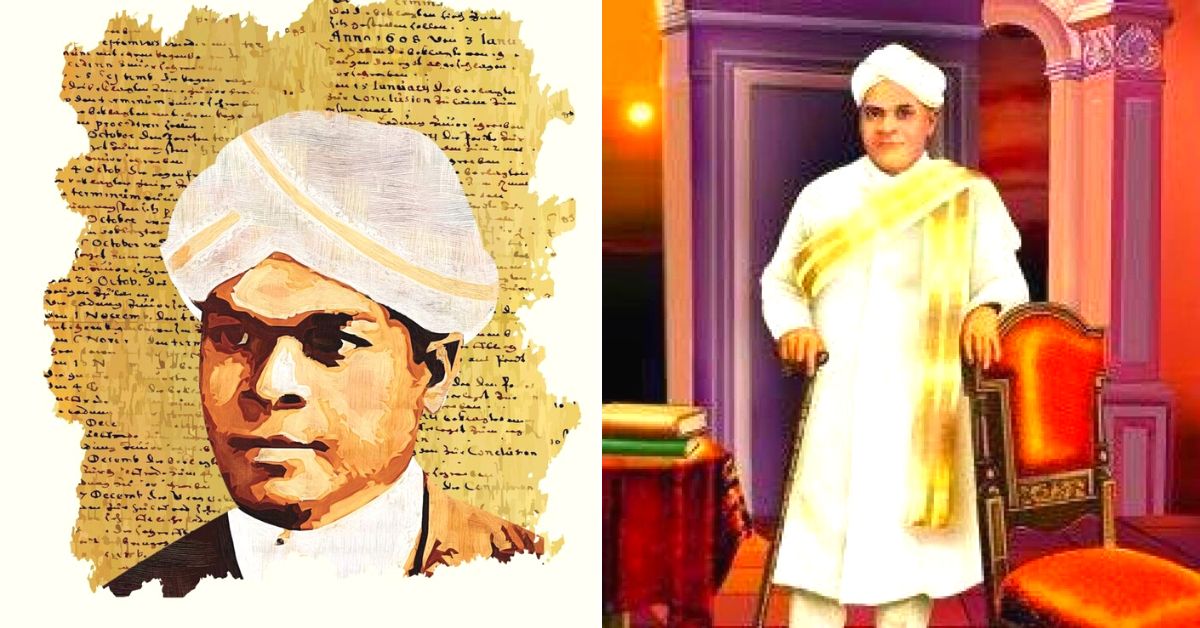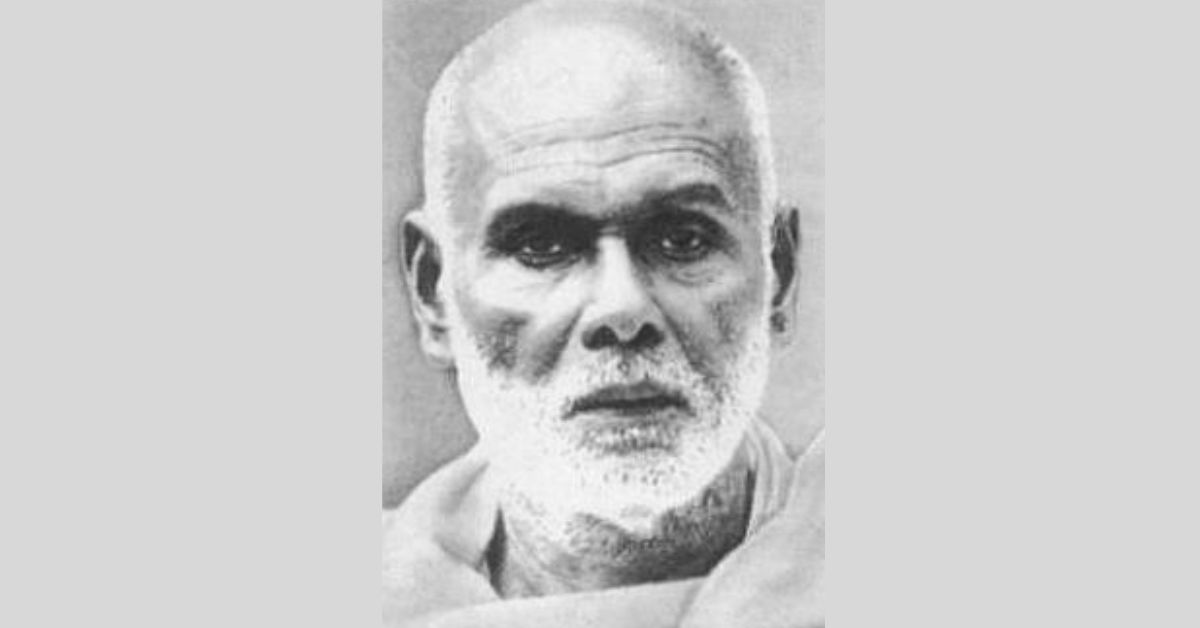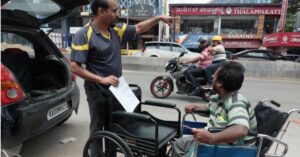Denied Jobs, Education, Doc Fought Immense Caste Prejudice to Contain Bangalore Plague
Denied jobs and education because he came from the Ezhava caste community, Dr Padmanabhan Palpu fought many roadblocks to play a pivotal role in containing the plague in Bangalore, while dedicating himself to dismantle caste-based discrimination.

Dr Padmanabhan Palpu (1836-1950), a much-revered doctor and social reformer from Kerala, was nearly denied an education and vocation because of the circumstances of his birth.
Born into the Ezhava community, which lies near the bottom of the Indian caste system, the only avenues open to him were the “traditional occupations” of toddy tapping and farming. Unwilling to succumb to the existing social order in the erstwhile princely state of Travancore (Kerala), however, he sought to be a doctor outside his home province.
Dr Palpu would not only play a pivotal role in effectively containing the 1898-99 plague in Bangalore (known today as Bengaluru) and establishing the famous Victoria Hospital in the city, but also standing alongside social reformer Sree Narayana Guru and Malayalee poet Kumaran Asan as pioneers of the battle against the pernicious caste system in Travancore.
They founded an organisation called Sree Narayana Dharma Paripalana (SNDP) Yogam, which later became the beacon for many social reformation movements in Kerala. It was a remarkable life dedicated to serving the sick, uplifting his community and challenging the caste system.
Overcoming the obstacles of caste system
Born to Bhagavathy Padmanabhan and Matha Perumal at Pettah, Trivandrum on 2 November 1863, Palpu earned his matriculation in 1883. Despite ranking second in the all-Travancore medical entrance test, his application to medical school was rejected because of his caste.
“In those days, the higher castes shunned the lower castes because they believed that touch or approach or even sight of the latter within a certain distance caused pollution to them. This state of affairs led to systemic and regular endeavours to prevent them from entering roads, schools, offices and other public places,” wrote scholar TP Sanakarankutty Nair in a 1979 article published in the Proceedings of the Indian History Congress.
“Even as a student, Palpu was determined to eradicate these social evils, but Kerala society at that time happened to be an Augean stable. In 1885 Palpu joined Madras Medical College and in 1889 he was awarded the Licentiate degree in Medicine and Surgery (LMS),” added Nair.
While his father struggled to make ends meet, his mother sold her jewellery to send her son to Madras. Following his studies, he applied for a job in Travancore’s medical department, but was denied yet again because of his caste. Instead, he applied for a job in the Madras medical service before shifting to the more progressive Mysore medical service in November 1891.
In fact, according to this disturbing excerpt published in Social Mobility in Kerala, “Visiting Travancore as a qualified medical doctor, he went to the place and pleaded to be permitted to return to his home state and serve the Rajah. The Rajah’s response was (in some versions) to offer Palpu a patch of land with coconut trees on it, and the promise that he could tap todde from them tax-free. In other versions, the haughty Rajah first tells Palpu, ‘Yes, you can serve. Here there’s plenty of work for you to do,’ before having him taken outside, shown the coconut trees in the royal compound and told, ‘There’s plenty of trees for you to climb’.”
After gaining employment in Mysore province, he would spend the next 30 years in service till his retirement in 1920. Throughout this period, he held onto important posts like “Health officer, Bangalore, PA to sanitary commissioner, deputy commissioner, central jail superintendent, etc,” noted Nair. “His tenure of office as the Mysore plague camp superintendent, even at the risk of his own life, won him appreciation from all quarters including the Surgeon General and Sanitary Commissioner of the Government of India.”
For a brief year in 1917-18, he also worked as sanitary advisor to the Baroda Government. But with his official duties in Mysore, Dr Palpu strove to vastly improve the conditions of the Ezhava community alongside other like-minded reformers.

Containing the plague
Dr Palpu began his tenure in service of Mysore province as the superintendent of the newly established Vaccine Institute in Bengaluru. Impressed by his work and capabilities, Palpu was given the task of running St Martha’s Hospital and the Lunatic and Leper Asylums.
When the plague struck Bengaluru in August 1898, he was appointed “superintendent of the plague camps in the city”, according to Meera Iyer, the author of Discovering Bengaluru, in a column for the Deccan Herald.
Dr Paplu was responsible for running “segregation camps for infected people, contact camps and health camps for their relatives,” notes Iyer. Besides his empathy, compassion and selflessness, what also stood out was his courage. He stood tall in the face of disaster even as other senior doctors withdrew from the scene fearing death.
According to Iyer, “Palpu’s duties took him on surveys of plague-affected areas where he investigated living conditions. To try and restrict the spread of plague, he used to personally meet family members of infected people to convince them to remove themselves to contact camps. This was done ‘with sympathetic and persistent advice’ and with ‘repeated preaching and persuasion,’ as he put it, which took a lot of time, sometimes requiring visits over two or three days during which he would explain the dangers of infection to them and it usually worked.”
In 1899, as the plague began to subside, he was sent by the Mysore government to Cambridge University, where he studied bacteriology, serum therapy and tropical medicine. Palpu would come back to India with a Diploma in Public Health. Upon his return in 1900, Lt Col PH Benson, the then senior surgeon and sanitary commissioner in the Mysore administration, recommended that he should be appointed as health officer for Bengaluru city.
Palpu served in the Mysore government until 1920. He also became a Fellow of the Royal Institute of Public Health and a member of the British Medical Association.
Unending service to his cause
Despite the demands of his work in Mysore province, he never stopped working towards the upliftment of the Ezhava and other downtrodden caste communities.
According to Dr Ajay S Sekher, in an article published in the Forward Press, “[Dr Palpu] joined hands with Barrister GP Pillai and TM Nair of the Justice Party and collaborated in the first mass petition for representation and inclusion of non-Brahman natives of Travancore in public services, called the Malayali Memorial in 1891. He provided financial support to the campaign and was its third signatory. But the Malayali Memorial turned out to be a campaign for Nair representation. They got sufficient entry into the service and their radicalism ended there.”
“[However] The Avarnas, including the Ezhavas, were not given any share in power. Therefore, Dr Palpu initiated a second memorial in Kerala for the representation of his own community in public services, signed by more than 13,000 leading tax payers from the community, which became the bedrock of democracy in Kerala called the Ezhava Memorial in 1896,” he adds.
The Ezhava Memorial submitted to Diwan Shungara Soobbiyer of Travancore province essentially highlighted how Ezhavas in Travancore were denied access to government schools and public sector jobs. “This mass petition to the regime by the outcastes of Kerala for the first time in modern history is often hailed as the Magna Carta of Kerala as it was the first subaltern sociopolitical movement and mobilisation for representation and inclusion in a modern democratic society in Kerala,” claims Dr Sekhar.
The 1896 memorial attracted a lot of media attention. To further highlight the caste problem, he even sent barrister GP Pillai to the United Kingdom and succeeded in presenting the grievance of the Ezhavas in the British parliament. In 1900, another petition was delivered to Lord Curzon, but none of these initiatives resulted in any immediate material results.
Dr Palpu would also go on to associate with radical social reformer Sree Narayana Guru on the advice of famed Indian saint Swami Vivekananda. According to Dr Krishnakumar A, in an article published in the Paideuma Journal of Research, “Swami Vivekananda advised him to associate with some spiritual person in this effort to fight for the rights of the Ezhavas.”
Dr Palpu (as vice president) would establish the SNDP Yogam in 1903 with Narayana Guru at its helm, along with poet Kumaran Asan as secretary. The organisation was ostensibly started to guide the social, educational, economic and religious advancement of the Ezhava community, but it would later go on to accommodate other ‘backward’ caste communities.

Soon, branches of the SNDP Yogam began popping up all over Kerala. “Under Palpu’s patronage, and energetic organising abilities, Yogam became a powerful mass movement. His aim in organising the Yogam was by and large social and political to fight against the ruling authority for the continuous denial of civic and human rights,” notes Krishnakumar.
However, over the years, divisions began to grow within the Yogam and the original founders were pushed to the margins. In 1928, Narayana Guru criticised the organisation for not including other low caste communities in Kerala. In the following year, Palpu too criticised the organisation he helped establish by accusing it of catering to certain vested interests. He eventually passed away in 1950, but not before leaving behind an indelible impression on future generations. If you found our stories insightful, informative, or even just enjoyable, we invite you to consider making a voluntary payment to support the work we do at The Better India. Your contribution helps us continue producing quality content that educates, inspires, and drives positive change. Choose one of the payment options below for your contribution- By paying for the stories you value, you directly contribute to sustaining our efforts focused on making a difference in the world. Together, let’s ensure that impactful stories continue to be told and shared, enriching lives and communities alike. Thank you for your support. Here are some frequently asked questions you might find helpful to know why you are contributing?

Today, Kerala has a chief minister (Pinarayi Vijayan) from the Ezhava community. More than a 100 years ago, the very thought of having a person from such a community running the highest political office in the state would have been shut down.
(Edited by Divya Sethu)
Sources:
Dr. Palpu—The Pioneer of Ezhava Social Reformer of Kerala (1863-1950) by TP Sanakarankutty Nair, Published in Proceedings of the Indian History Congress, Vol. 40 (1979)
Dr Palpu: The Pioneer of Ezhava Social Reformer by Dr Krishnakumar A, Published courtesy Paideuma Journal of Research
Palpu: A doctor, activist who fought the plague and the caste system by Meera Iyer; Published on 23 August 2020 courtesy Deccan Herald
Dr Palpu – who countered plague and caste alike by Dr. Ajay S Sekher, Published on 8 December 2020 courtesy Forward Press
Advaid/Twitter
This story made me
-
97
-
121
-
89
-
167













